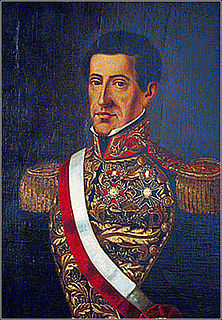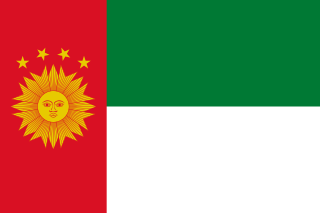 W
WThe War of the Confederation, was a military confrontation waged by Chile, along with Peruvian dissidents, and the Argentine Confederation against the Peru–Bolivian Confederation between 1836 and 1839. As a result of the Salaverry-Santa Cruz War, Peru-Bolivia Confederation was created by General Andrés de Santa Cruz, which caused a power struggle in southern South America, with Chile and the Argentine Confederation, as both distrusted this new and powerful political entity, seeing their geopolitical interests threatened. After some incidents, Chile and the Argentine Confederation declared war on the Peru-Bolivian Confederation, although both waged war separately.
 W
WChilean expansionism refers to the foreign policy of Chile to expand its territorial control over key strategic locations and economic resources as a means to ensure its national security and assert its power in South America. Chile's significant territorial acquisitions, which occurred mostly throughout the 19th century, paved the way for its emergence as one of the three most powerful and wealthiest states in South America during the 20th century. It also formed Chile's geopolitical and national identity as a tricontinental state and one of the countries with the longest coastlines in the world.
 W
WThe French blockade of the Río de la Plata was a two-year-long naval blockade imposed by France on the Argentine Confederation ruled by Juan Manuel de Rosas. It closed Buenos Aires to naval commerce. It was imposed in 1838 to support the Peru–Bolivian Confederation in the War of the Confederation, but continued after the end of the war. France didn't land ground forces, but instead took advantage of the Uruguayan Civil War and the Argentine Civil Wars, supporting Fructuoso Rivera and Juan Lavalle against Manuel Oribe and Rosas.
 W
WThe Republic of North Peru was one of the three constituent Republics of the short-lived Peru–Bolivian Confederation of 1836–1839.
 W
WThe Peru–Bolivian Confederation was a short-lived state that existed in South America between 1836 and 1839. The country was a loose confederation between the states of Peru, divided into the Republic of North Peru and the Republic of South Peru, and Bolivia, with the capital located in Tacna. The Peru–Bolivian Confederation's formation was personally influenced by Marshal Andrés de Santa Cruz, the President of Bolivia, who served as the first and only head of state under the title "Supreme Protector".
 W
WThe Restorative Army of Peru was a military organization, formed in 1837, with the purpose of dissolving the Peruvian-Bolivian Confederation. It was led by Marshal Agustín Gamarra who held the title of Provisional President of the Republic of Peru as well. The primary mission of the army was to reunite the republics of North Peru and South Peru into one Republic of Peru.
 W
WThe Republic of South Peru was one of the three constituent Republics of the short-lived Peru-Bolivian Confederation of 1836–39.